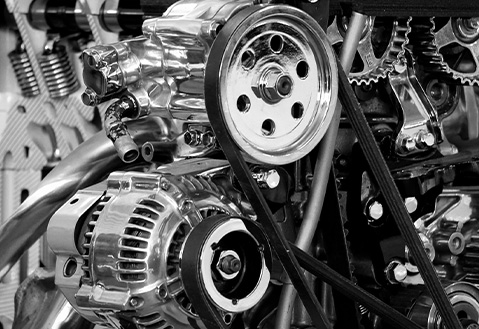- Arabic
- French
- Russian
- Spanish
- Portuguese
- Turkish
- Armenian
- English
- Albanian
- Amharic
- Azerbaijani
- Basque
- Belarusian
- Bengali
- Bosnian
- Bulgarian
- Catalan
- Cebuano
- Corsican
- Croatian
- Czech
- Danish
- Dutch
- Afrikaans
- Esperanto
- Estonian
- Finnish
- Frisian
- Galician
- Georgian
- German
- Greek
- Gujarati
- Haitian Creole
- hausa
- hawaiian
- Hebrew
- Hindi
- Miao
- Hungarian
- Icelandic
- igbo
- Indonesian
- irish
- Italian
- Japanese
- Javanese
- Kannada
- kazakh
- Khmer
- Rwandese
- Korean
- Kurdish
- Kyrgyz
- Lao
- Latin
- Latvian
- Lithuanian
- Luxembourgish
- Macedonian
- Malgashi
- Malay
- Malayalam
- Maltese
- Maori
- Marathi
- Mongolian
- Myanmar
- Nepali
- Norwegian
- Norwegian
- Occitan
- Pashto
- Persian
- Polish
- Punjabi
- Romanian
- Samoan
- Scottish Gaelic
- Serbian
- Sesotho
- Shona
- Sindhi
- Sinhala
- Slovak
- Slovenian
- Somali
- Sundanese
- Swahili
- Swedish
- Tagalog
- Tajik
- Tamil
- Tatar
- Telugu
- Thai
- Turkmen
- Ukrainian
- Urdu
- Uighur
- Uzbek
- Vietnamese
- Welsh
- Bantu
- Yiddish
- Yoruba
- Zulu
Նյմ . 16, 2024 10:38 Back to list
v belt for truck
Understanding V-Belts for Trucks Importance, Types, and Maintenance
V-belts are essential components in the power transmission systems of trucks, playing a critical role in ensuring that various engine accessories function correctly. From the alternator to the water pump, the reliability of these belts directly affects the overall performance of a truck. This article explores the importance of V-belts, the different types available, and essential maintenance practices to ensure longevity and efficiency.
Importance of V-Belts in Trucks
V-belts are designed to transfer power between mechanical components efficiently. They have a trapezoidal cross-section, which allows them to wedge into pulley grooves, increasing friction and therefore improving power transmission. In trucks, these belts are commonly used to drive systems like the
1. Alternator – Generating electricity to power the electrical system of the truck. 2. Water Pump – Facilitating coolant circulation, thus preventing the engine from overheating. 3. Power Steering Pump – Assisting in steering by providing hydraulic power. 4. Air Conditioning Compressor – Maintaining cabin comfort by circulating refrigerant.
The failure of a V-belt can lead to serious issues, such as engine overheating, power steering loss, or a malfunctioning electrical system. Thus, understanding their function and maintaining them can help truck operators avoid costly repairs and downtime.
Types of V-Belts
There are several types of V-belts used in trucks, categorized based on their design and construction
1. Classical V-Belts Traditional belts that come in various sizes and can handle moderate power loads. They are often made from rubber and are suitable for a range of applications.
2. Narrow V-Belts These belts have a smaller width, allowing for more compact designs but require more precise alignment. They are useful in applications that have space constraints.
3. Raw Edge V-Belts Raw edge belts provide better grip and energy transmission. They are more resistant to wear and can handle higher loads compared to traditional belts.
v belt for truck

4. Variable Speed V-Belts Designed for applications where the speed of the belt may vary, these belts offer greater flexibility and efficiency in operation.
Choosing the right type of V-belt is crucial for optimal performance. Factors such as the truck's engine specifications, the accessories being driven, and the operational environment all influence the selection process.
Maintenance Practices
Proper maintenance of V-belts is essential to prolong their lifespan and maintain efficiency. Here are some key practices that truck operators should adopt
1. Regular Inspections Routinely check the V-belts for signs of wear, such as fraying, cracks, or glazing. Early detection of issues can prevent belt failures.
2. Proper Tensioning Ensure that belts are properly tensioned. A loose belt can slip, leading to decreased performance and excessive wear, while an overly tight belt can strain the components it drives.
3. Keep Pulleys Clean Dirt and debris can interfere with the performance of V-belts. Clean the pulleys regularly to ensure optimal grip and prevent premature wear.
4. Replace when Necessary It’s advisable to replace V-belts at regular intervals or when they show significant signs of wear. Keeping a replacement belt on hand can prevent unexpected downtime.
5. Avoid Overloading Each belt has a specified load capacity. Avoid overloading the belts by ensuring the accessories they drive are functioning properly and not placing excessive strain on the system.
Conclusion
In summary, V-belts are crucial components in the operation of trucks, impacting various systems that keep the vehicle running smoothly. Understanding the different types of V-belts and the importance of regular maintenance can help truck operators ensure longevity and efficiency. By adopting good maintenance practices and being vigilant about the condition of V-belts, operators can avoid costly breakdowns and keep their trucks in optimal working order. Implementing these strategies not only enhances vehicle performance but also contributes to overall safety on the road.
-
Korean Auto Parts Timing Belt 24312-37500 For Hyundai/Kia
NewsMar.07,2025
-
7PK2300 90916-T2024 RIBBED BELT POLY V BELT PK BELT
NewsMar.07,2025
-
Chinese Auto Belt Factory 310-2M-22 For BMW/Mercedes-Benz
NewsMar.07,2025
-
Chinese Auto Belt Factory 310-2M-22 For BMW/Mercedes-Benz
NewsMar.07,2025
-
90916-02660 PK Belt 6PK1680 For Toyota
NewsMar.07,2025
-
drive belt serpentine belt
NewsMar.07,2025

